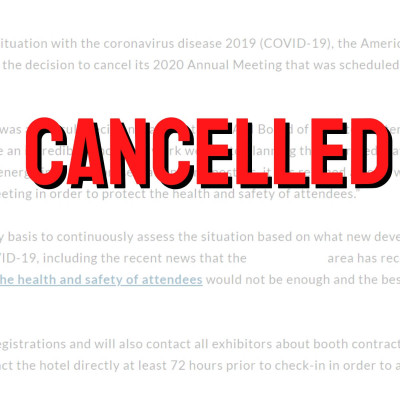What do PR professionals do when COVID-19 cancels major annual meetings?

This article previously appeared in PRSA-NCC and O’Dwyer’s:
Nearly 30 annual scientific meetings have already been canceled, postponed, or moved into a virtual format because of the coronavirus pandemic. Countless more major events will succumb as shelter-in-place and stay-at-home guidance is extended through April and beyond. As a healthcare-focused agency, The Reis Group is quickly adapting to a new reality.
For healthcare communications professionals who use these significant gatherings to promote medical advances and scientific expertise, we are instantly forced to scrap our artfully crafted media plans. What happens to your press program? How can you still get information out about your big meeting?
Public relations professionals must be optimists and problem-solvers. This is just another (huge) challenge to work around as we creatively look to meet our objectives of communicating scientific advances. Regardless whether the meeting is cancelled, postponed, or gone virtual, here are key points we consider in recrafting our multifaceted media approach:
Competing with COVID-19: Coronavirus is dominating the news, yet have to remember there is still some space for non-COVID stories. Look hard to research the best timing, angle, and targets, and tap into your contacts. Many medical specialties, trade publications, and niche verticals are hungry for content, especially with the loss of cutting-edge research news from major meetings.
Finding your news peg: It’s, uh, pretty hard to promote research from a meeting that didn’t happen. So, we need to creatively adjust news pegs. Are presentation abstracts published in a Society journal? Will there be a virtual meeting or preview that will present new work? Identifying the “why now” will be important in your outreach to select reporters.
Rescheduling your embargo: Many meeting presentations are embargoed until the date and time of presentation. Others are released online with the conference materials. Work with your meeting team to hold back studies from immediate release and coordinate with researchers so that you can maintain exclusivity of the work for your promotional efforts.
Making your story easy to cover: Journalists are under incredible pressure right now. Think through how you can make it as easy as possible for a reporter to cover your story—know the availability of your experts, have your images ready to transmit–with source credits. Digital and print journalists are navigating a whole new world of virtual conferences and tele-reporting, too.
Thinking beyond your normal promotional approach: Getting a societies’ work covered beyond a news release will require some outside-the-box thinking. Can you host virtual office hours with researchers? Coordinate taped skype interviews, or local broadcast outreach in researchers’ home markets? Host virtual media briefings around key topics? Diversify to other specialty trade publications? Or maybe spotlight key trade reporters in a roundtable social media conversation to comment on the field of research?
2020 will likely not turn out to be a groundbreaking year for meeting coverage, but communication about health and the science remains vital to move your field forward. This year, more than ever, communicators need to harness their creativity and fast thinking to overcome challenges to achieve their communications objectives.




